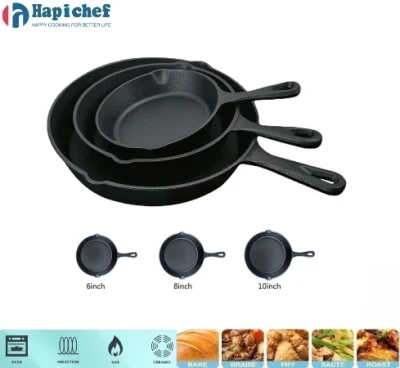Effective Techniques for Cleaning and Maintaining Cast Iron Pots in a Manufacturing Environment
The Art of Cleaning Cast Iron Pots in Factories
Cast iron cookware is revered for its durability and exceptional heat retention. In factories where cast iron pots are produced, the cleaning process is crucial not only for maintaining the quality of the products but also for ensuring the safety and efficiency of the manufacturing process. This article explores the effective methods and techniques for cleaning cast iron pots in a factory setting.
Importance of Cleaning
Cleaning cast iron pots in a factory is essential for several reasons. Firstly, it ensures that the products are free from contaminants that could affect their quality. Residual oils, dust, or impurities from the manufacturing process can lead to defects in the final product, which may result in customer dissatisfaction. Secondly, maintaining a clean workplace is important for the health and safety of the employees. A clean environment minimizes the risk of accidents and ensures compliance with health regulations.
Cleaning Methods
In a factory setting, various cleaning methods are employed to maintain the cleanliness of cast iron pots. These methods can be categorized into manual cleaning and mechanical cleaning.
Manual cleaning is often the first step in the cleaning process. Factory workers use non-abrasive scrubbing pads along with hot water and a mild detergent to remove any residue from the surface of the pots. This method is effective in ensuring that the pots are thoroughly cleaned without damaging the seasoning layer that gives cast iron its non-stick properties. It's essential for workers to wear appropriate protective gear, including gloves and masks, to prevent exposure to harsh chemicals and ensure their safety.
cleaning cast iron pot factory

2. Mechanical Cleaning
For larger factories dealing with high volumes of production, mechanical cleaning may be employed to enhance efficiency. This method includes the use of industrial-grade washing machines specifically designed for cast iron cookware. These machines utilize high-pressure water jets and specialized detergents to remove stubborn residues quickly and effectively. The advantage of mechanical cleaning is that it saves time and labor costs while providing a uniform cleaning result across all products.
3. Chemical Solutions
In some cases, factories may utilize specialized chemical solutions designed for cleaning cast iron. These chemicals break down grease and grime effectively. However, it is vital to ensure that any chemicals used are safe for food contact surfaces and adequate rinsing is performed afterward to eliminate any residues.
4. Drying and Maintenance
Once the cleaning process is complete, properly drying the cast iron pots is crucial. Factories often employ drying ovens or air dryers to eliminate moisture completely, as any lingering water can lead to rust formation. Following the drying process, it is common practice to reapply a light layer of oil to maintain the pots' seasoning and protect them against corrosion.
Conclusion
Cleaning cast iron pots in a factory involves a combination of manual and mechanical methods that emphasize safety, efficiency, and quality control. By adhering to rigorous cleaning protocols, manufacturers can ensure that their cast iron products meet the highest standards of quality and safety. As the demand for durable and high-performing cookware continues to rise, the importance of effective cleaning techniques in the production of cast iron pots cannot be overstated. Through diligent cleaning practices, factories not only protect their products but also enhance their overall reputation in the marketplace.
-
Why Every Kitchen Needs a Casserole Cast Iron DishNewsJun.24,2025
-
Experience the Tradition and Quality of Cast Iron CookwareNewsJun.24,2025
-
Double Sided Cast Iron Grill PanNewsJun.24,2025
-
Cast Iron Dutch Ovens You’ll Actually UseNewsJun.24,2025
-
Buy Cast Iron Griddle for Everyday CookingNewsJun.24,2025
-
Barbecue Iron Grill Cooking PowerNewsJun.24,2025
-
Standard Product Lines from Cast Iron Cookware SuppliersNewsJun.11,2025
